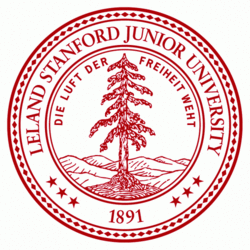
|
|
Abstract:
This dissertation presents a novel method for treating bubbles in free surface
incompressible flow that relies on the conservative advection of bubble mass and
an associated equation of state in order to determine pressure boundary
conditions inside each bubble. It is shown that executing this algorithm in a
traditional manner leads to stability issues similar to those seen for
partitioned methods for solid-fluid coupling. Therefore, the problem is
reformulated monolithically. This is accomplished by first proposing a new fully
monolithic approach to coupling incompressible flow to fully nonlinear
compressible flow including the effects of shocks and rarefactions, and then
subsequently making a number of simplifying assumptions on the air flow removing
not only the nonlinearities but also the spatial variations of both the density
and the pressure. The resulting algorithm is quite robust, has been shown to
converge to known solutions for test problems, and has been shown to be quite
effective on more realistic problems including those with multiple bubbles,
merging and pinching, etc. Notably, this approach departs from a standard
two-phase incompressible flow model where the air flow preserves its volume
despite potentially large forces and pressure differentials in the surrounding
incompressible fluid that should change its volume. The proposed method allows
bubbles to readily change volume according to an isothermal equation of state.
This method is then extended to model both large and small scale bubble
dynamics. Small under-resolved bubbles are evolved using Lagrangian particles
that are monolithically two-way coupled to the surrounding flow in a manner that
closely approximates the analytic bubble oscillation frequency while converging
to the analytic volume as predicted by the well-known Rayleigh-Plesset equation.
A novel scheme is presented for interconverting between these under-resolved
Lagrangian bubbles and the larger well-resolved Eulerian bubbles. A novel
seeding mechanism is also presented to realistically generate bubbles when
simulating fluid-structure interaction with complex objects such as ship
propellers. The proposed framework for bubble generation is general enough to be
incorporated into all grid-based as well as particle-based fluid simulation methods.
|
![[PHOTO]](../../images/bucky.gif)
![[PHOTO]](../../images/bucky.gif)
